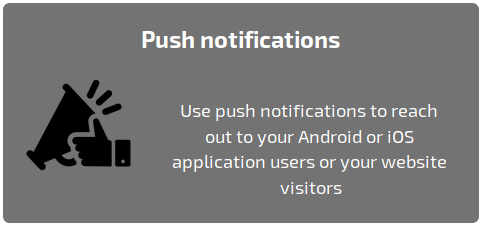Web push: settings & implementation
For application push see this article!
 | Web push notifications (also known as browser push notifications) are small pop-ups in the browser. These messages are contextual, timely, personalized, and best used to engage, re-engage, and retain website visitors. You can send such notifications to your clients' desktop and mobile browsers. When a user subscribes to Web push notifications, every time you send a push notification it is displayed on the user's device at the top of the screen. Moreover, it is displayed even if the window is inactive. |
What is the difference between Web push and Mobile push?
Web Push notifications are sent to a visitor's device from a website via a browser. It can be both mobile and desktop browsers. At the same time, Mobile Push notifications come from mobile applications.
A push notification can contain:
- A title that is similar to email subject
- Notification text
- An image or an icon
- A clickable link
Altcraft Marketing uses different push platforms for the supported browsers:
| Service | Which browsers use this service to send Web push notifications? |
|---|---|
| Google Firebase (ex. Google Cloud Messaging) | Google Chrome, Mozilla Firefox, Opera, Яндекс.Браузер, Samsung Internet Browser |
| Apple Push Notification Service | Apple Safari (incl. PWA-apps) |
| Mozilla Services | Mozilla Firefox |
Please note that sending notifications via Mozilla Firefox is possible both directly - Mozilla Services (SDK is built into the browser), and through the Google Firebase service.
Google Cloud Messaging is no longer available due to migration to Firebase Cloud Messaging!